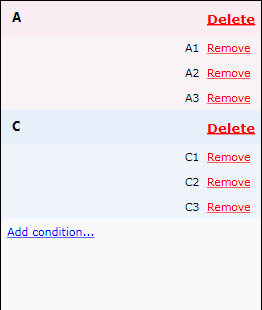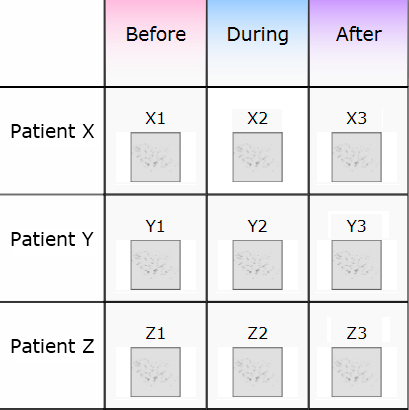How do my experiment designs affect analysis?
Progenesis QI supports two types of experiment design. Each performs a variation of the one-factor Anova calculation and produces p-values to indicate the statistical significance of the difference in group abundance data.
The differences in the calculations are intended to take into account subtle differences in the way that the experiments may have been performed and so give a more effective and reliable statistical analysis.
The two supported experiment designs are described below to help you choose which type suits your experiment.
Between-subject design
Do samples from a given subject appear in only one condition? Then use the between-subject design.

To set up this design, you simply group the samples according to the experimental condition (e.g. “Control”) of the samples. The Anova calculation assumes that the conditions are independent and therefore gives a statistical test of whether the means of the conditions are all equal.
Within-subject design
Have you taken samples from a given subject under different conditions? Then use the within-subject design.
Note: you must have a sample from every subject for every condition to use a within-subject design.
For example, you would choose this type of design for a time series experiment where every subject has been sampled at each time point.

To set up this design, you tell the software not only the experimental condition to which each sample belongs, but also the subject from which it came. The software will then perform a repeated measures Anova.
A standard Anova is not appropriate because the data violates the Anova assumption of independence. With a repeated measures Anova, individual differences can be eliminated or reduced as a source of between-condition differences. This helps to create a more powerful test.
The within-subject design can be thought of as an extension of the paired-samples t-test to include comparison between more than two repeated measures.






